New partnership announced with Borderless
Sona and Borderless announce an exciting partnership.
Building a staff schedule couldn’t be easier.
Reduce payroll errors with real-time T&A.
Fill 50% more shifts with your own employees.
Ensure shifts are covered even if you're understaffed.
Manage absence requests and approvals.
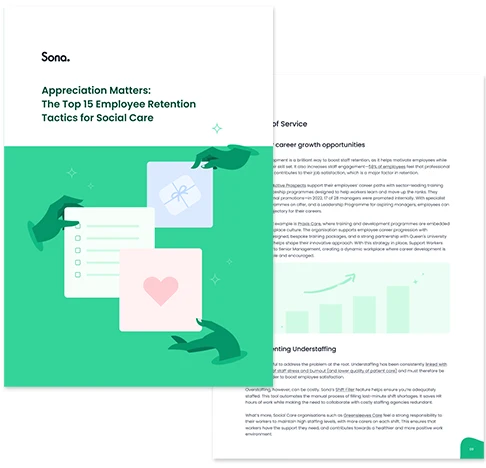
Practical ways to boost team morale with proven examples from across the sector.
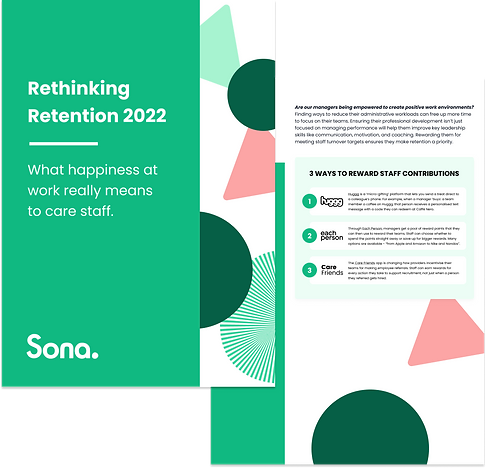
Find out what care employees say matters to them most at work.
Search and view employees with customised permission levels.
Key employment information all in one place.
Store visas, professional certifications and more with easy access.
Control personal and operational details of your staff.
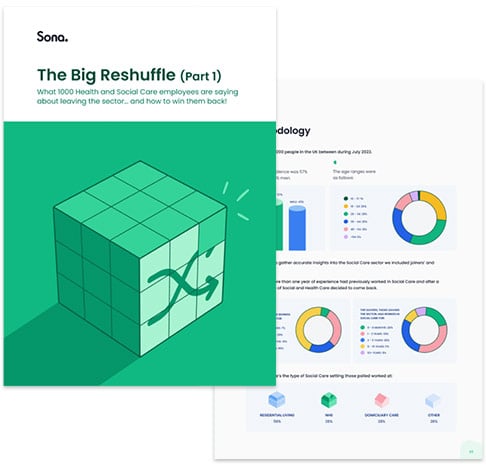
Why are people leaving Social Care, and where are they going?
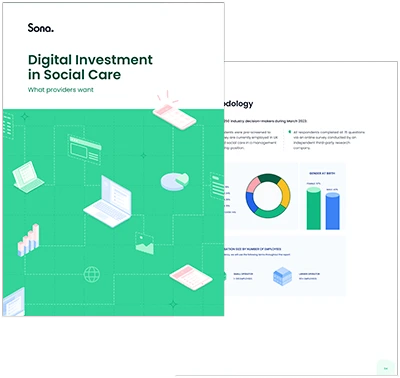
We asked 250 Social Care leaders about their attitudes towards digitisation and their plans for the next 12 months...
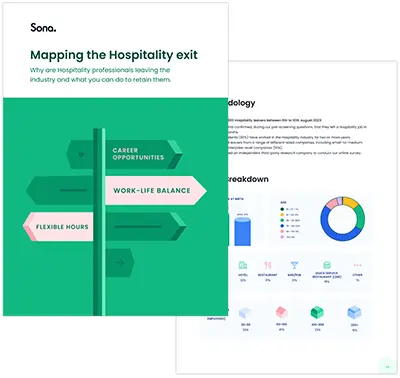
Why are Hospitality workers leaving the industry, and what can you do to retain them?
Share updates with a single click.

Staff can see relevant messages in one place.
Request post-shift feedback from staff.
Recognise staff contributions by sending them praise.
Identify staff at risk of churning.
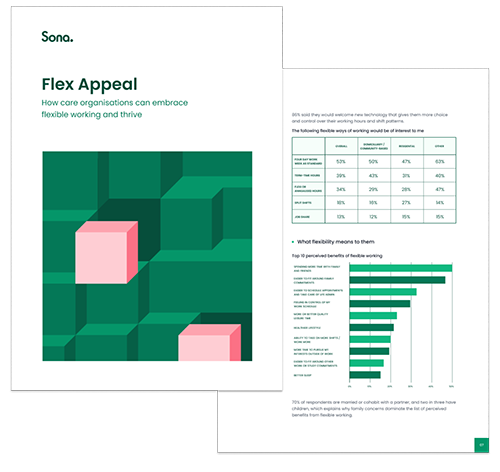
How care organisations can embrace flexible working and thrive.
Maintain quality of care and reduce costs.
Maximise profitability through AI-powered forecasting & scheduling.
Elevate your operational efficiency and guest satisfaction.
Streamline operations across sites.
Developed alongside Social Care experts with decades of combined experience.
See why we are the leading user-friendly, end-to-end platform that prioritises both efficiency and wellbeing.
The Sona Partner Network is an ecosystem of solution experts and complementary technologies.
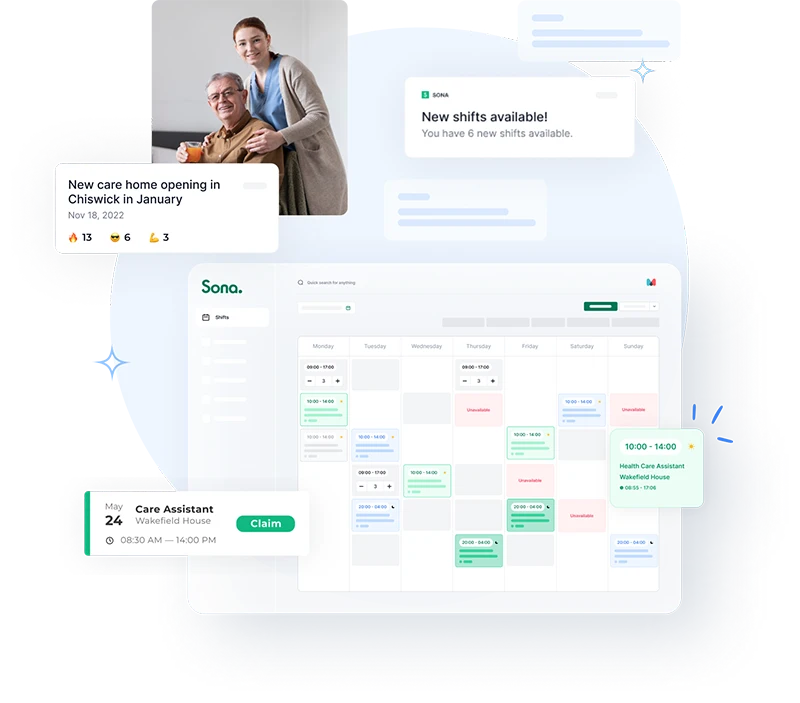
Give staff greater visibility of shifts available to work, with a simple "shift claim" process to increase their income.
Improve employee engagement and retention with a seamless employee communication platform.
Happier staff provide greater customer experiences, which in turn drives return rates, revenues and recommendations.
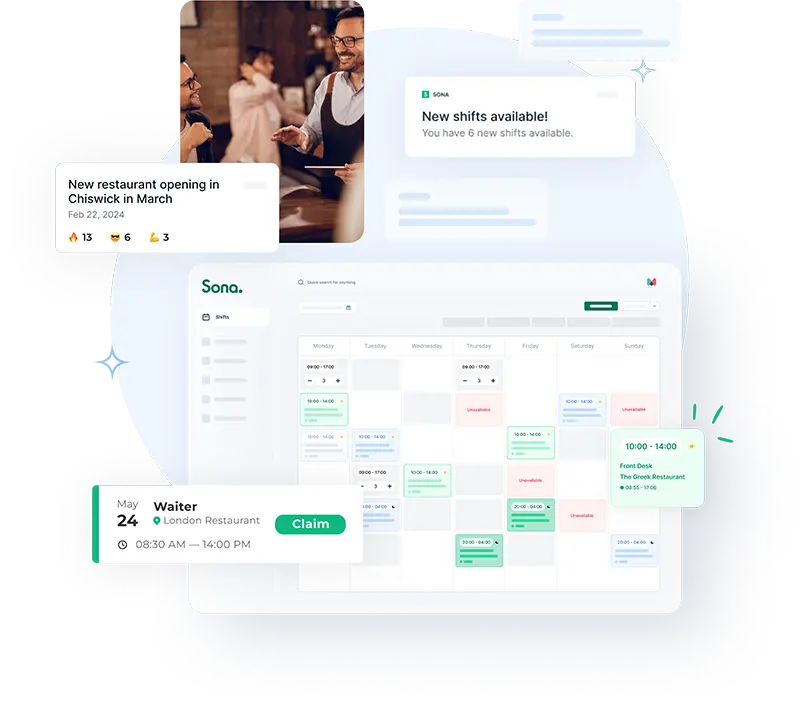
Give staff greater visibility of shifts available to work, with a simple "shift claim" process to increase their income.
Improve employee engagement and retention with a seamless employee communication platform.
Happier staff provide greater customer experiences, which in turn drives return rates, revenues and recommendations.
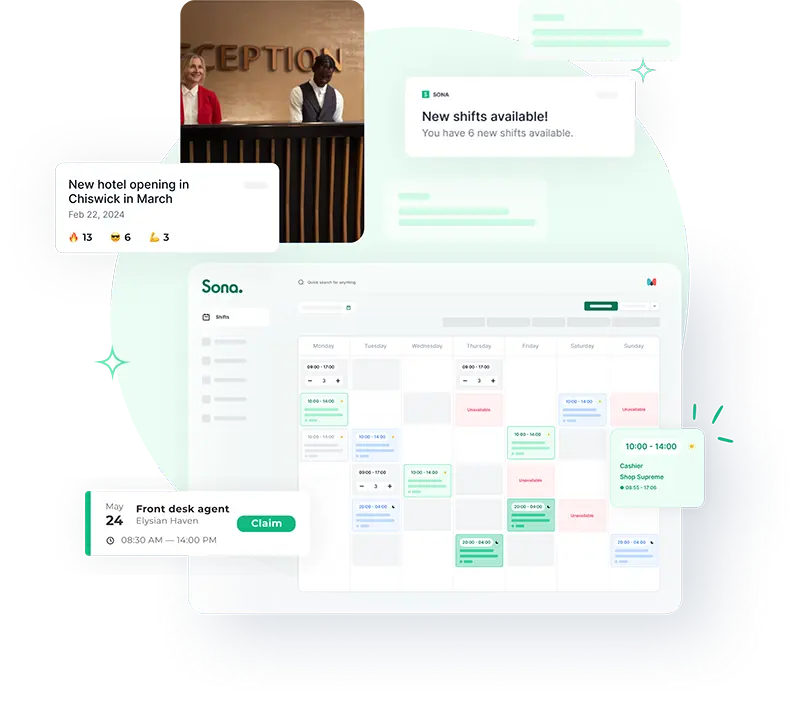
Meet the Sona team online with our webinar series or in-person at an event near you.
New research, insights, and strategies for frontline leaders.
Downloadable templates, reports and guides from Sona.
Stay up to date with the latest Sona news and research.
Learn how our customers are transforming their people operations.
| 3 min read
Sona and Borderless announce an exciting partnership.
| 2 min read
Sona and Found by Lottie announce an exciting partnership.
| 4 min read
Remove operational errors, drive efficiency, and help your team spend less time on admin with a unified solution.
PUBLISHED: February 2025
Download the report to learn how hospitality operators are embracing AI challenges and opportunities in 2025.
PUBLISHED: January 2025
Reveal the most important metrics in 2025!
PUBLISHED: December 2024
This infosheet is packed with practical insights to drive high-quality, low-regret WFM purchases.Insight, Digital Transformation, Workforce Management
Frontline staff, representing a large proportion of the global workforce, have historically faced a communication divide. Whether they're healthcare professionals, hospitality staff, or retail assistants, their ability to provide direct feedback to management has often been limited. But today, innovative platforms like Sona are stepping up to bridge this gap, ensuring everyone can be heard and recognised.
6 minute read

Traditionally, feedback mechanisms for frontline workers have been a challenge to implement. A large number of employees with different responsibilities and skills, and based in various locations can mean that organisations struggle to gather feedback effectively.
Multiple-choice surveys have usually been the only viable solution, but they don’t always reveal the underlying issues specific to each employee. At the same time, face-to-face interviews are not feasible for many organisations, and the data they provide is hard to quantify. Such gaps in communication contribute to serious challenges, like high turnover rates and diminishing morale.
The key to a healthier, more engaged workforce lies in establishing a culture of ongoing feedback.
Regular, quantifiable communication allows for managers to identify issues in real-time and be proactive in solving them. This fosters a more responsive and dynamic work environment that employees can thrive in. The shift from occasional to continuous feedback can significantly enhance satisfaction and operational efficiency.
Modern solutions, like Sona, have transformed the feedback process.
Managers can now:
Deploying a new solution that might influence the lives of hundreds (or thousands!) of staff members can be intimidating to them - and rightfully so. Communicating the benefits well and ensuring that everyone feels supported throughout the process is key to a successful implementation.
These are some of the benefits organisations can communicate to employee in order to obtain their buy-in:
Additionally, when a feedback platform communicates well or is part of a larger system that includes HR and/or rostering, it can provide additional depth to the information collected. For example, it can help answers questions like:
These learnings can then inform your retention strategy and ensure employees stay with you long-term, saving you recruitment costs and helping you offer a better service overall.
Selecting the appropriate feedback platform for an organisation isn't a decision anyone makes lightly. Careful consideration and a thorough understanding of both the needs of your workforce and the capabilities of the platform are necessary. When embarking on this decision-making journey, it is vital to weigh the pros and cons.
This process involves more than just comparing features; it is about aligning the platform's offerings with your organisation's specific goals and the unique challenges faced by frontline staff.
As you sit down to chart out your options, consider if the solution in question:
In addition to the basic features above, the ideal platform will also have:
Early warning notifications can be a huge help for managers looking to identify members of the team who might be struggling, and address their concerns.
There are a few key steps when implementing a feedback platform with retention in mind:
By implementing these steps, your organisation can create a robust early warning system that prioritises employee well-being. By using their feedback to inform policies, you can create healthy and supportive work environment that boosts retention and productivity.
A feedback system can be a transformative step towards improving employee engagement and efficiency. However, these are some pitfalls organisations need to be aware of:
By being mindful of these pitfalls, organisations can create an effective and trusted feedback system that genuinely supports and benefits their frontline teams.
The era of frontline employees feeling disconnected can be consigned to history. With platforms like Sona, not only is the feedback gap being bridged, but an environment of well-being, appreciation, and open communication is can be fostered. For businesses seeking to empower their employees, adopting such practices isn't just a choice - it's a necessity.
If you liked this article, why not subscribe to our newsletter to get the latest news and views delivered straight to your inbox?
7 min read
What is frontline workforce management and what should you expect from modern workforce management software? Here’s our handy guide.
4 min read
Read on to discover how technology can unlock real-time insights into your teams' emotional wellbeing and turn this data into a competitive advantage.
3 min read
Struggling with staff retention? Learn how regular well-being and mental health check-ins can transform your worker's lives.